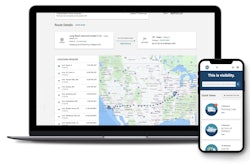
Consumer expectations have changed a great deal over the last few years. With the rapid rise of online shopping and the success of Amazon, more retailers are starting to see the need to re-configure their distribution networks. For larger items, shipping direct from the supplier is a common scenario, but drop shipping direct from manufacturers for smaller items, or items imported from overseas, is becoming a popular option as well.
The catch is that retailers must trust third parties with more of their order management, inventory management and transport management. This requires a new type of real-time dynamic supply chain orchestration by retailers, enabling greater cost efficiency by best-of-breed party performance and providing a layer of visibility and control over the third parties involved in drop shipments.
Speed and Flexibility are Vital
The big brick-and-mortar retailers are all aware of the shift toward online sales, and they’re looking for the most optimal ways to fulfill online orders in full and on time.
A 2017 study by MetaPack concluded that 45 percent of consumers have abandoned a basket on a retailer’s website because of unsatisfactory or limited delivery options. If shoppers cannot get what they want, when they want it, they will continue to look elsewhere.
Negative delivery experiences can also have a devastating impact. The same study also found that 43 percent of consumers would not shop with that retailer again for at least a month after a negative delivery experience, and 38 percent said they would never return.
The Growing Popularity of Drop Shipping
The emergence of e-commerce marketplaces, where low-cost manufacturers can sell directly to end consumers, has helped contribute to the resurging popularity of drop shipping.
Large or awkwardly shaped goods can take up vast amounts of space in stores and warehouses, so by shipping direct from the supplier, a retailer can keep inventory levels down, reduce warehouse space, and get goods into the hands of customers as quickly as possible.
The same process can be followed for smaller goods, too. However, drop shipping does not come without risks. For one, consumers are likely to associate the product delivery experience – positive or negative – with the entity they purchased from. That means a retailer is putting a lot of trust in their supplier to get that delivery experience right. That direct relationship with the customer is also incredibly vital for retailers. It is important that they do not give away too much information, or they run the risk of turning a supplier into a rival.
Establishing Supply Chain Orchestration
Retailers can benefit from the reduced inventory and high delivery speed of a drop shipping arrangement without giving up operational visibility and commercial control by setting up a digital control tower.
A digital control tower provides full visibility into a retailer's distribution network, from internal warehouses and store inventory to external partners and disparate delivery services. By establishing an end-to-end view, they can account for every product in stock and estimate precisely what it would cost to deliver any given order within a set time frame.
But visibility alone is not enough. Having the ability to make changes and optimized decisions that ensure orders are fulfilled cost effectively without compromising on customer experience is equally important. With real-time visibility and control of inventories across stores, warehouses and third parties, static stock can be kept to a minimum.
Adding control provides the flexibility to pick the best set of partners and drive the right supply chain activities for each individual order to meet (or even exceed) the customer experience expectation.
Leveraging Analytics for Competitive Edge
With e-commerce driving greater demands on logistics, particularly trucking fleets that are suffering a labor shortage, organizations must have access to a network of different choices and the means to deploy them as efficiently as possible. A coordination of outgoing orders and returns to maximize the use of every truck or rerouting inventory based on geographical proximity is a growing concern.
Supply chain orchestration empowers retailers to capture and analyze data as well as automate manual processes. While drop shipping certainly puts new complexity into the supply chain, orchestration can help manage that complexity and turn a challenge into a competitive edge.
The winners in e-commerce master the art to control the external activities by partners as perfect as their internal processes.














